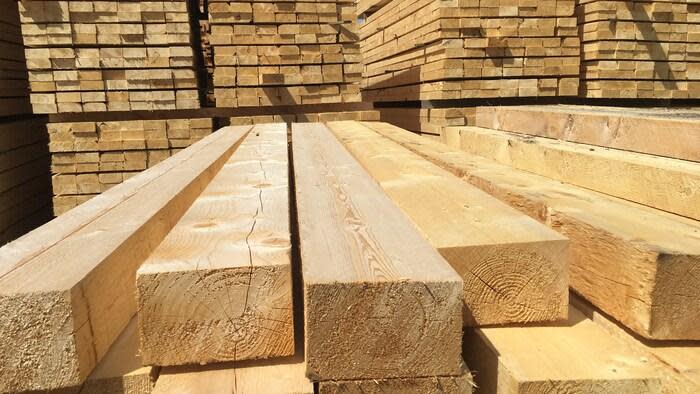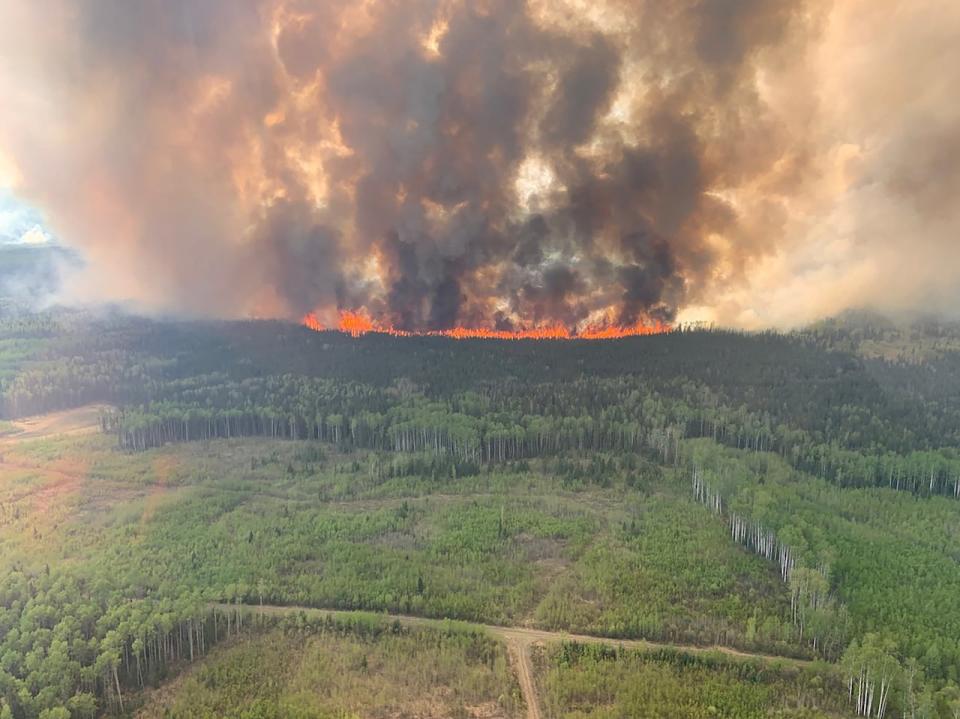Lumber industry wary of coming months after record wildfire season in 2023

Steven Peters is concerned about the impact of wildfires on his family's business — and the local forestry industry as a whole.
He is the third generation to work for Evergreen Lumber, a lumber mill based in La Crete, Alta., that has operated for more than 30 years. But it felt a singe from last summer's wildfires — even through the winter months, which brought little snow.
"We were salvaging right in the burn this year," Peters said.
"We had a flare up in January, where trees would actually still torch. We were logging right around hotspots."
A record 2.2 million hectares of forest burned in Alberta last year — much more than the five-year average of 226,000 hectares. A recent paper, which analyzed the effects of the 2023 wildfires, estimated that 6.6 per cent of the province's forested area burned.
Dry conditions and drought persisted throughout Alberta, leaving the provincial government and lumber industry concerned about what this summer might bring.
Charred lumber can still be harvested, depending on the depth of the burn. But dry trees are susceptible to twisting and cracking, and can attract certain insects. Existing industry requirements also force some burned timber to stay on the land because of its ecological benefits.
Evergreen Lumber was fortunate last year, Peters said.
The company, located about 550 kilometres northwest of Edmonton, had already lost roughly half its area in 2019, he said. The impact was mitigated during a following inventory check, which found the business was undercutting.
"We're one big fire from — like our timber quota — [being] completely wiped out," he said.

Smoke rises from the Bald Mountain Fire in the Grande Prairie Forest Area near Grande Prairie, Alta., on May 12, 2023. (Alberta Wildfire/Handout via Reuters)
Annual allowable cut
During a wildfire update last week, Alberta Forestry and Parks Minister Todd Loewen encouraged industry to harvest as much as possible.
"An enormous amount of land burned last year, so it'll probably be impossible to get it all off in the amount of time that's needed," Loewen said at the time.
"And it will affect their operations going forward, as far as how much available timber they have within their forest management area."
The annual allowable cut is the amount of timber that can be harvested sustainably within a forest area. In 2021, the provincial government updated guidelines to incorporate wildfire impacts when determining the annual allowable cut.
In 2023, almost half of the 33 fire management units were burned to such an extent that an allowable cut adjustment process was triggered, according to Loewen's office.
This year's allowable cuts are still being assessed, said Aspen Dudzic, spokesperson for the Alberta Forest Products Association, a forestry industry group.
"It's too soon to say what the long term impacts are going to be," she said. "Whether we have a lot of fire seasons that look like this in the future, there certainly could be some big impacts to the environment.
"At this point, I'm not hearing that the sky is falling."
Protecting livelihoods
The association is working with the provincial government and Alberta Wildfire to prepare for the coming months, Dudzic said.
The issue is "very personal" for the industry, she said. Livelihoods are affected, but people in forestry also live near the woods.
"These are the people living in those communities that are getting evacuated and that are seeing the impacts of this head on," she said.
Peters, from Evergreen Lumber, said ensuring future wildfire seasons are less destructive is crucial.
"A lot of sawmills, they're the lifeblood of small towns," he said.
"When the jobs run out, the people move away and you have nothing. So people have to work to figure something out."

